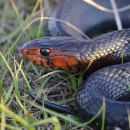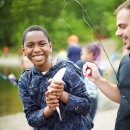The National Fish Hatchery System raises millions of fish and aquatic wildlife to improve sustainable recreational fishing, support fisheries that have been impacted by a federal dam, recover federally listed threatened or endangered species, fulfill our Tribal Trust responsibilities, and prevent at-risk species from becoming endangered.
What We Do
Our Services
2023 By the Numbers:
- 126 million - Fish released by national fish hatcheries
- 49 million - Eggs transferred through the National Broodstock Program
- 20 million - Fish distributed to Tribal lands
- 118 million - Sport fish stocked to support state recreational fishing
- 90 threatened and endangered species – raised on national fish hatcheries
- 20 million threatened or endangered animals – released to support wild populations and preserve genetic diversity











